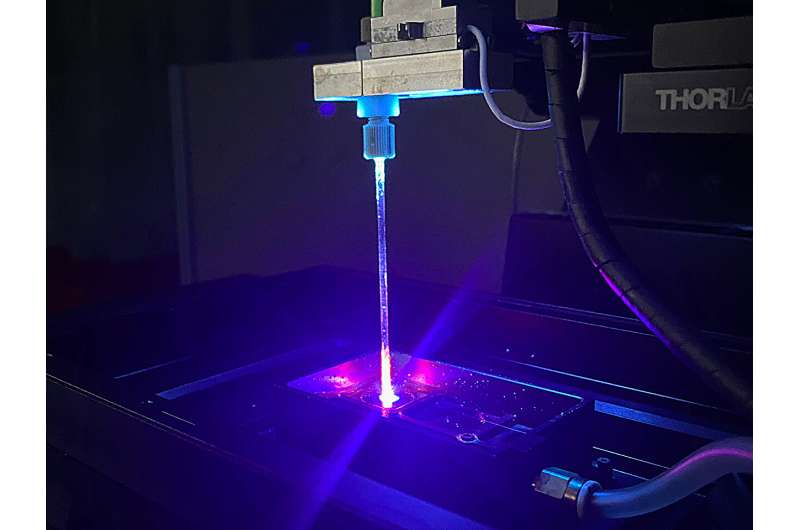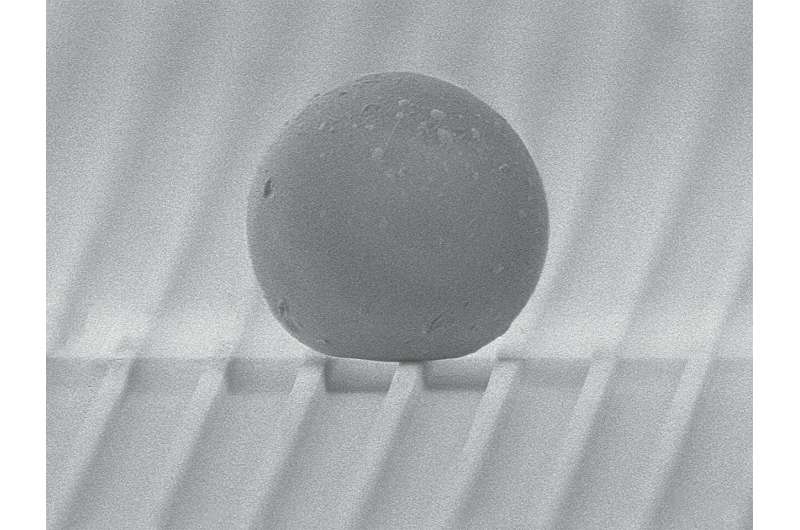

Innovative coating prevents limescale formation
source link: https://techxplore.com/news/2024-02-coating-limescale-formation.html
Go to the source link to view the article. You can view the picture content, updated content and better typesetting reading experience. If the link is broken, please click the button below to view the snapshot at that time.

February 12, 2024
Innovative coating prevents limescale formation
by Peter Rüegg, ETH Zurich

Hot water tanks, washing machines, kettles: limescale forms in every domestic appliance that comes into contact with (hot) water—especially in areas where the water is hard, meaning high in calcium. Often the only thing that helps is to use vinegar or a special descaler to dissolve the rock-hard deposits and restore the appliance's functionality.
This is a nuisance in households—and an expensive problem in thermal power stations, for example those that generate electricity, where the formation of limescale is known as fouling.
Heat exchangers are particularly prone to limescale, which greatly reduces the efficiency of the systems: a layer of limescale just one millimeter thick in the heat exchanger's pipes reduces the efficiency of electricity production by approximately 1.5 percent. To compensate for these losses an additional 8.7 million metric tons of hard coal would have to be burned. That's bad for the carbon footprint and the climate, and it's expensive for the electricity producers.
Innovative limescale-repellent surface
A research team from ETH Zurich and the University of California, Berkeley has now found a possible solution to this problem: a special limescale-repellent coating with microscopically small ridges that prevent the adhesion of limescale crystals. The team's study was published in the journal Science Advances.
Fundamental research into the development of limescale-repellent surfaces has been sparse. So the researchers, led by former ETH Professor Thomas Schutzius, took a close look at the interactions among individual growing limescale crystals, the surrounding water flow and the surface at the microscopic level.
Based on this, Schutzius' doctoral student Julian Schmid and other team members developed several coatings from various soft materials and tested them in the lab at ETH Zurich.

Hydrogel with microstructure is most effective
The most effective coating turned out to be a polymer hydrogel, the surface of which is covered in tiny ridges thanks to microtextured molds, which the researchers fabricated using photolithography.
The hydrogel's microstructure is reminiscent of natural models such as shark scales, which also have a ribbed structure to suppress fouling on the sharks' skin.
In kettles or boilers, the riblets ensure that the limescale crystals have less contact with the surface, meaning they can't adhere and are thus easier to remove; water flowing over the hydrogel and through the ribbed structure carries them away. While the coating can't fully prevent limescale crystals from forming, the constant passive removal of the microscopic crystals stops them growing together to form a tenacious layer.
In producing the different coatings, the researchers primarily varied the polymer content. The lower the polymer content and the higher the water content, the less well the calcium carbonate crystals adhere to the surface.
Tests with model particles made of polystyrene show that the coating's surface structures must be smaller than the particles that are deposited on it. This reduces the contact surface and thus the adhesive force. "We varied the material's surface structure to achieve the greatest efficiency, then carried out the crystal experiments with this optimum structure size," Schmid says.
More information: Julian Schmid et al, Imparting scalephobicity with rational microtexturing of soft materials, Science Advances (2023). DOI: 10.1126/sciadv.adj0324
Recommend
About Joyk
Aggregate valuable and interesting links.
Joyk means Joy of geeK